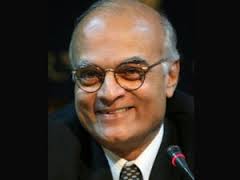Sri Lanka’s internal war which ended in May 2009, had cost the country around US$ 200 billion according to India’s former National Security Adviser and Foreign Secretary, Shivshankar Menon.
In his book Choices: Inside the Making of India’s Foreign Policy, Menon says that this estimate does not include the “opportunity cost” to Sri Lanka which was once the fastest growing and the most open economy in South Asia.
About deaths, the veteran Indian diplomat turned security expert says that between 1983 and 2009, 80,000 to 100,000 people, including combatants from both sides, lost their lives. Among them were 30,000 to 50,000 civilians, 27,693 LTTE cadres, 23,790 Sri Lankan army personnel, and 1,155 men of the Indian Peace Keeping Force (IPKF).
The final stages of the war had created a little over 300,000 refugees or Internally Displaced Persons (IDPs). The war had also left 1.6 million land mines in the Northern and Eastern Provinces.
But the real casualty of the war was Sri Lanka’s composite society, something that the LTTE and Sinhala chauvinism are “equally responsible for”, Menon says.
“Sri Lanka’s democracy was flawed by disappearances, killings, torture, detention, and widespread human rights abuses committed by all sides in the war. Civil-military relations were skewed, Sinhala society was militarized, and the brutalized remnants of Tamil civil society were leaderless, without direction or hope. Nor was there any sign of an attempt to come to terms with the legacy and result of the war, to undertake real reconciliation,” he observes grimly.
Menon points out that LTTE chief Prabhakaran had left his Sri Lankan Tamil community “gutted and brutalized” by his war.
“The Jaffna Tamils, who had once fed, led, ruled and thought for Ceylon, were reduced to a group of refugees in their own country and abroad, dependent on aid and the dole, their best and brightest dead or in exile. In death and in life, Prabhakaran’s baleful impact on his people continued to take its toll.”
Menon appreciates Sri Lanka’s successes in post-war rehabilitation, but adds that “peace is more than an absence of violence and the presence of basic infrastructure. It is also in the mind.”
And this is where Sri Lanka has failed since the war, he points out and adds that both the Sinhalese and the Tamils have failed to grasp the nettle.
“A victorious regime under Mahinda Rajapaksa and the Sinhala majority did not show the magnanimity in victory that true peace requires. Equally, the Tamil community does not have leaders left, who can make peace. A Mandela needs a De Klerk and vice versa. Neither is visible in Sri Lanka.”
“In Sri Lanka, politics is stunted on both sides. Nor has either side, or the international community, managed to get past the arguments of the past. How relevant those arguments of the past are today, is debatable,” he says.
Harping on the past and the solutions offered in the past “shows a paucity of leadership and thought” in both the Sinhala and Tamil parties, Menon points out.
He recalls that India had urged Rajapaksa that if he was to be the “leader of all Sri Lankans” he should reach out through devolution of political power, restore human rights, and give a “sense of dignity to the victor and the vanquished alike.”
But Rajapaksa could not bring himself to be politically magnanimous in victory, Menon says.
Courtesy: The Indian Express


